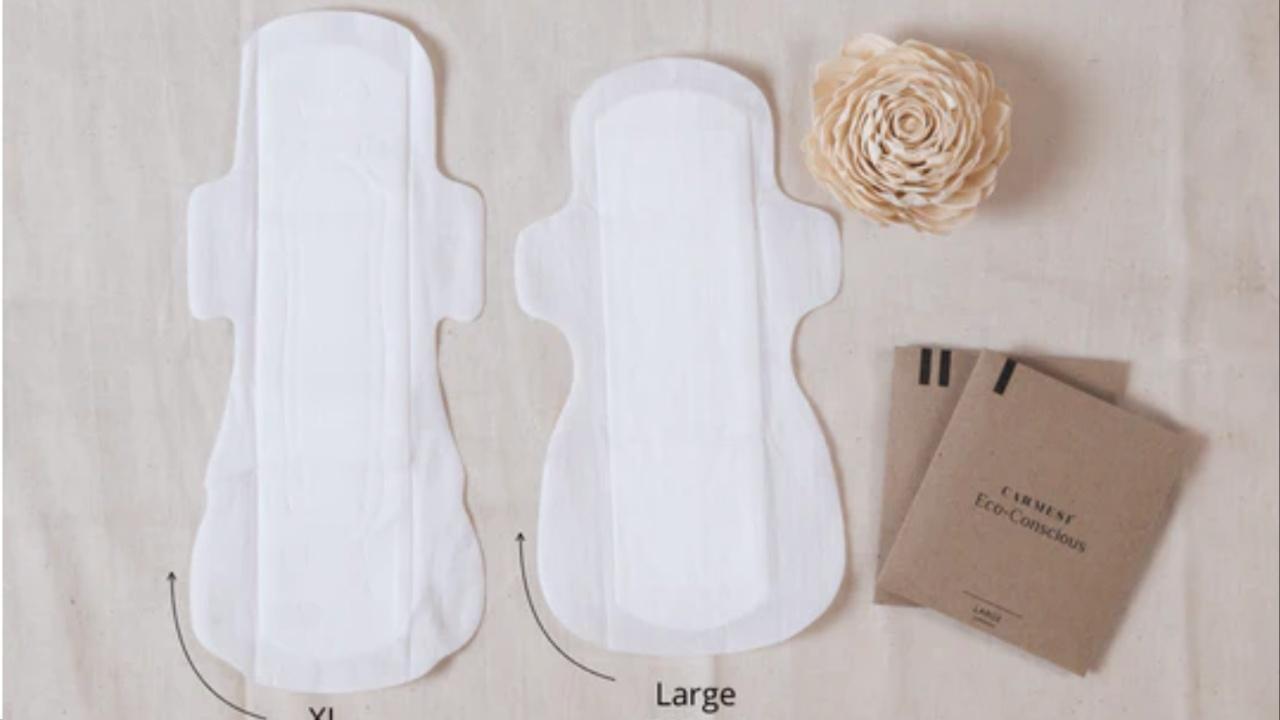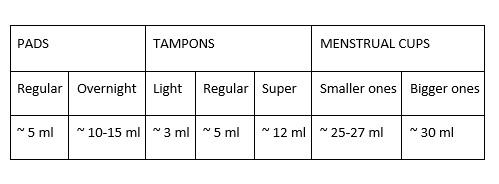Being mindful of the environment is the need of the hour. As opposed to plastic sanitary napkins which take 250-800 years to decompose, now coming up are plant-based napkins that are not only easy to decompose but also light on the intimate skin

An estimated 80 per cent of urban women rely on inorganic plastic napkins which not only endanger workers who treat waste but also carry harmful elements that cause nausea, fatigue and release carcinogenic gases.
Menstruation, often referred to as period, is the natural vaginal bleeding that occurs as part of a woman's monthly cycle. The female body prepares for pregnancy every month by the law of nature. If there is no incidence of pregnancy, the uterus, or womb, loses its lining resulting in periodic blood flow. This flow comprises blood and tissue that is shed from inside the uterus.
According to a recent study conducted by an NGO, Toxic Links, around 12.3 billion sanitary napkins, amounting to 113,000 tonnes of waste, get dumped into India’s landfills every year. The study also claims that the commonly found napkins constitute 90 per cent plastic which is equivalent to the impact of 4 plastic bags.
An estimated 80 per cent of urban women rely on inorganic plastic napkins which not only endanger workers who treat waste but also carry harmful elements that cause nausea, fatigue and release carcinogenic gases. The question arises, what is the solution to this double whammy caused by plastic napkins?
ADVERTISEMENT
Priti Banthia Mahesh, the chief programme coordinator of Toxics Link, said, “Menstrual hygiene is an important issue. But most programmes related to this end up distributing disposable sanitary pads. There has been little realisation that inorganic pads are made of plastic and are non-degradable ending up polluting our environment. It is important to create sustainable alternatives for distribution to women.”
Why switch to plant-based sanitary napkins
Countering the menace of plastic pollution is the women-led venture Carmesi. Being mindful of the environment is the need of the hour and it is this principle which led to the birth of plant-based sanitary napkins. These pads are made keeping the future in mind, a future that is not littered with hills of plastic napkins that we dispose of today.
Designed with eco-friendly techniques, these napkins are revolutionising the sanitation industry with greener alternatives. The top sheet and back sheet are made up of corn fiber, a plant-based output, replacing the traditional use of plastic. Not only this, but the napkins also come in a biodegradable brown paper bag that is easy to break down, as opposed to plastic packaging.
Going one step ahead, Carmesi has introduced panty liners which are designed for light-spotting, minimal discharges and incontinence (unintended passage of urine). Towards the end of a menstrual cycle, women undergo spotting or a light discharge of blood. Since, the discharge is minimal, using a full-sized sanitary napkin is not only uneconomical but also mounts unjustified pressure on the environment.
Filling in this gap are panty liners which are similar to sanitary pads but are much smaller, thinner and less absorbent. They are mainly used to absorb discharge, urine leakage or very light menstrual flow. Although they’re usually meant for non-period discharge, panty liners can be used during the last day of the period or could be carried if period is about to commence.
Menstrual hygiene
Midday Online spoke to Tanvi Johri, co-founder of Carmesi and Dr Surabhi Siddhartha, Consultant Obstetrician & Gynaecologist, Motherhood Hospital, Kharghar to learn about menstrual hygiene. Here are the edited excerpts from the interview:
What should women keep in mind to maintain menstrual hygiene?
Johri shares menstrual hygiene tips to keep infections at bay.
1. Wash your hands before handling a menstrual product, especially with invasive period wears like cups and tampons.
2. Change your pads every 4-6 hours, and your tampons every 4-8 hours. Empty your cups by 12 hours depending on the blood flow.
3. Wash your genital area frequently during your period to keep the area clean from blood. This will maintain the vaginal pH and protect you from itching and infections. Don’t use soap as this will change your pH. Lukewarm water is enough, or you can use a dedicated intimate cleanser. After washing, wipe from front to back.
4. Never use scented sanitary products. They can irritate your skin, change your pH and cause rashes and infections.
5. Drink enough water to remain hydrated and protected from infections.
6. Always wrap your pads and tampons in a piece of paper and throw it in the garbage can. Never flush it down the toilet or throw it out in the open without wrapping it first.
What are the myths about menstrual hygiene?
1. Impure blood is shed during periods
There’s absolutely nothing impure or toxic about period blood. Menstrual blood is the same as that which flows through the rest of the body, just combined with the unfertilized egg and the tissues of the uterine wall.
2. You can wear a pad for the whole day
Just because a pad sits outside the body, you should not wear it for a whole day. When you let blood sit on it for an extended period of time, it becomes a breeding ground for bacteria and can cause infections. So, you should always change your pad every 4-6 hours regardless of your flow.
3. You should not take a head bath during periods
There’s no scientific evidence that states any disadvantages to washing your hair during your periods. It’s a mere myth and you don’t have to compromise on your personal hygiene just because you’re on your period. In fact, hormonal fluctuations during the period cycle can actually make your hair oilier. Hence, it’s a good idea to give it a wash!
How effective are tampons and cups in managing period flow?
Tampons and cups are very effective in managing period flow, as long as you use them according to your flow. In fact, some researchers have found that cups are more effective at handling flow than some pads and tampons in some cases. Here’s a comparison of how much fluid each product can hold:

The capacity, however, isn’t the only determining factor of period flow management. Unless you have a very heavy flow. In order to be able to effectively keep you protected, the period products you’re using must guard you against leaks. And, when used correctly, tampons and cups can be totally leak-proof.
How can women reduce cramps with home-based remedies?
Period pain can manifest itself as cramps in the pelvic area, discomfort in the stomach, lower back, and legs, or as a persistent aching. Women who have painful periods may have greater than normal amounts of natural substances that trigger uterine, intestinal, and blood vessel contractions. Johri lists down home-based remedies to treat menstrual cramps:
1. Abdominal massage with lavender, peppermint, rose or fennel essential oils diluted with a carrier oil like almond oil
2. Sipping on chamomile tea
3. Pain relief yoga poses
4. Applying a hot water bag on the lower abdomen
5. Dark chocolates also help to relieve period pain
What do different colours of period blood signify?
Pink blood
Pink blood is commonly noticed as your menstruation begins. Some of the new, brilliant red blood may mingle with vaginal discharge at this time, causing the colour to fade and appear pink. Vaginal discharge is a mixture of fluid and cells that your vagina secretes to maintain your vaginal tissues healthy, moist, and free of infection or discomfort. If you have light periods, your blood may appear pink.
Bright red blood
As your uterus begins to aggressively discharge blood during your period, you may notice a bright red colour. This simply signifies that your blood is fresh and has not been in the uterus or vagina for an extended period of time.
Dark crimson blood
Crimson red blood is merely blood that has remained in the vagina for a longer period of time. It has even been observed with blood clots. Clotting is also regarded normal unless the clots are greater than quarters in size.
Brown or black blood
These are colour changes that occur when blood takes a longer time to exit the vagina. Black blood is blood that is dark red or brown in colour and appears black. As your menstruation comes to an end, the black blood might mingle with vaginal discharge and appear brown.
How can we empower women on their period cycle?
1. It is critical to have regular access to bathrooms during menstruation. This should be as near to the workstation as feasible to prevent interruption and provide simple access.
2. Menstrual blood loss can be so severe at times that it pours through any protection used. This can be highly humiliating; however, it is significantly improved if darker chair textiles with wipe-clean surfaces are provided. Consider the influence on menstruating women, as well as other issues, when selecting workplace fabric.
3. Darker materials for trousers/skirts are also more forgiving for menstruation women. Because body temperature might fluctuate during the menstrual cycle, breathable clothing is recommended. This is also an important concern for women who are experiencing menopausal symptoms. It's also a good idea to have a locker where you can keep a spare uniform
 Subscribe today by clicking the link and stay updated with the latest news!" Click here!
Subscribe today by clicking the link and stay updated with the latest news!" Click here!








